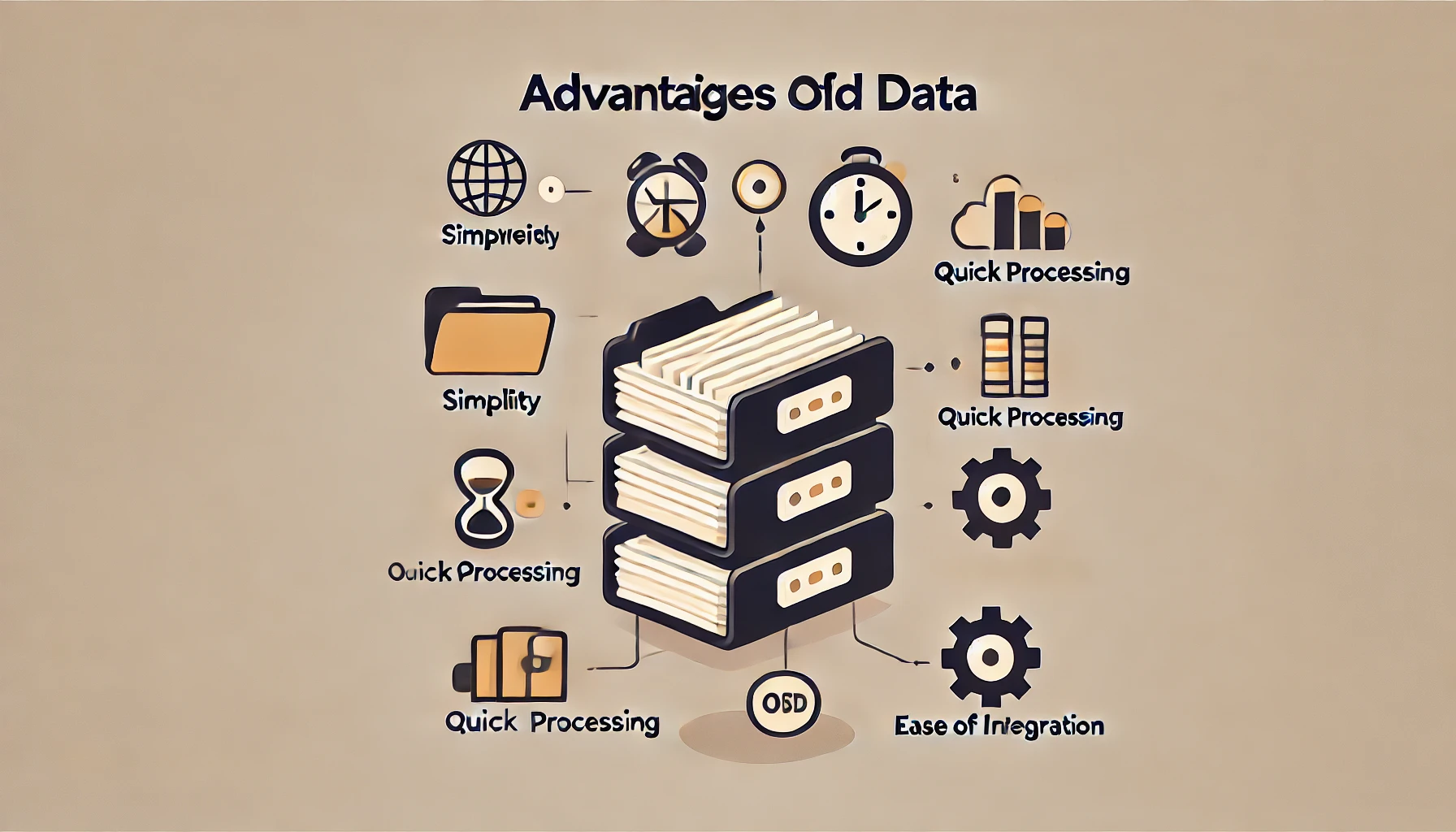Advantages of Plain Old Data: Why Simplicity Wins

In today's technologically advanced landscape, complex solutions often seem like the key to solving complex problems. However, many times the most effective approach comes from simplicity. The world of data analysis and artificial intelligence is no different, and often the most robust and powerful solutions come from utilizing plain old data (POD). This article will explore why simplicity and accessibility are the greatest strengths of POD. By focusing on these advantages, it will be clear why POD plays a significant role in the world of technology and data.
Simplicity
The most significant advantage of plain old data is its inherent simplicity. POD formats, such as CSV, TSV, JSON files, and text, are straightforward and easy to understand. Data is represented in a basic, readable format, which makes it very easy to view and interpret the raw data. This simplicity makes it easier for both humans and machines to process. Instead of needing complex database systems, the format of POD is naturally simple and intuitive. This will often cut down on processing time and overhead and will often be easier to use and manipulate.
Accessibility
Plain old data is easily accessible across different tools, languages, and platforms. The simple formats of POD do not require specific complex systems or tools to read, analyze, or manipulate the data. This accessibility means that data can easily be shared and transformed without the need for specialized tools and technologies. For example, data stored in a CSV file can be used in a database, by a machine learning system, by a spreadsheet or simply a text editor. This accessibility of data enables very fast prototyping and exploration.
Interpretability
Because the data is typically stored in a human-readable format, it makes it easy to interpret. POD does not need complex schema definitions or obscure coding language to read and check the validity of the data, making the data itself transparent and auditable. This clear form of data allows for faster development and debugging, helping prevent major errors early on in a software cycle.
Speed and Efficiency
Processing plain old data is very fast and efficient. Because the data is simple, algorithms and computer systems do not need complex resources to access the information, read the data, and process it. Therefore, POD is ideal for situations where speed and efficiency is required. Simple programs can quickly load and process large amounts of plain old data. When large and complex systems are not required, then the simplicity of POD becomes a significant advantage in overall speed and performance.
Low Computational Overhead
Processing plain old data also results in low computational overhead. You do not need complex systems or high computational power in order to use POD. The simple data format means you can get started very quickly using a multitude of different systems. This means you can be up and running and testing systems and algorithms in minutes, or even seconds. Due to the low overhead, you will also see savings in the overall cost of your system. This makes POD ideal for early prototyping, where you may want to quickly test new ideas.
Cost-Effectiveness
Plain old data is inherently cost-effective. You do not need to acquire proprietary software, specialized databases, or advanced skills to make good use of it. The use of simple open-source tools, and libraries means that the barrier to entry is lower for anyone who wants to get started in data analysis and AI. Therefore, it's a very cost-effective way to get started and create new systems with your data.
Ease of Data Validation
The human-readable nature of POD makes data validation much easier. Because the data is in simple formats, it means you can quickly check to make sure the data is correct and not corrupted. This can be a critical part of any development cycle, where you need to ensure the correctness of your inputs. By directly viewing the data, it's easier to spot and correct errors, which improves the overall accuracy and performance of your AI systems.
Flexibility
Plain old data is very flexible when it comes to data manipulation and interoperability. It is easy to convert POD into other data formats using basic programs. For example, if you have data in a CSV, it is very simple to convert it to a JSON or import it into a database. Similarly, if you want to extract data from a database into a more usable text-based format, that is also very simple with POD. The ease of this transformation and interoperability means that you can integrate it into a wide variety of different systems.
Reduced Complexity
Using plain old data reduces the complexity of systems. You do not need large, complex databases and data pipelines to access POD, meaning you can focus on the key features of your project. This will speed up your project and will make the whole system more auditable and understandable. By focusing on simplicity, you reduce the time to delivery and can focus on making your project successful.
Suitable for Many Use Cases
While sometimes you might need the power of advanced database systems, POD is also perfect for many use cases. For many applications, you don't need large complex datasets. A simple dataset that is processed using plain old data is enough. This means you can use POD in initial testing, prototyping and building proof of concept projects. Therefore, POD is suitable for use cases where large complex systems are not necessary, and when quick and easy solutions are preferable.
Conclusion
Plain old data offers an amazing set of advantages. It provides simplicity, accessibility, interpretability, speed, cost-effectiveness, flexibility, and reduced complexity. Because of its many advantages, plain old data is an important and powerful approach to data management. Therefore, it is something that anyone in the technology and data fields should take advantage of when creating new systems and processes.